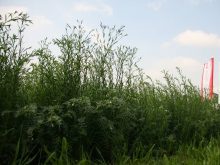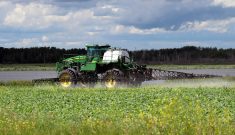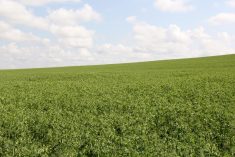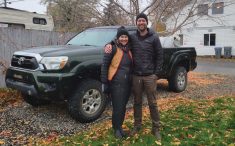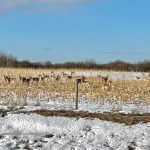This growing season has been different. I think we can all agree on that. As much as I have tried, it has pushed me to the thresholds of my cognitive abilities to index the challenges associated with the pandemic and then separate those from the unique challenges facing the agricultural sector. The general COVID-19 malaise that has settled over the world has, in many cases, infected our attitudes towards things that have little to do with the pandemic.
Anyway. I digress. I wanted to write about growing black beans; not COVID-19.
Read Also

Claas brings 1000 Series SP forage harvesters to Canada
In mid-August, Claas unveiled its new line of Jaguar forage harvesters at an event in Visalia, California, deep in the heart of that state’s dairy region.
This year, Jamie and I decided to grow 50 acres of black beans. It felt like a bold move, but one I felt well supported to make, given my access to my dad’s expertise and my employment at Manitoba Pulse and Soybean Growers.
I felt nervous about the decision. How would it work to seed it? How would it work to deal with a new company – Western Harvest Bean? How would spraying, scouting, harvest and selling work?
I had already, in my limited years on the farm, become accustomed to dealing with only a few different ag companies. Any and every departure from this norm puts me on an edge — not in a debilitating way, but rather in a puzzle-I-need-to-figure-out kind of way.
It would be downright arrogant of me to say that I figured all these things out, but there’s very little in life that I have completely demystified (and I like it that way). I can, however, tell you that I found sufficient answers to all my questions and came out the other end of the growing season having grown a respectable crop of black beans. It was a rewarding experience.
How much mental energy I wanted to put into growing this new crop was completely up to me, which, upon reflection, is an interesting attribute of farming in an area full of other farmers and farm-related businesses. The agronomist our farm often uses for advice on chemical applications would have had no problem walking me through every step of growing black beans (and he did give me lots of suggestions).
Throughout the season, no matter what my question, there were people to offer support, answers, suggestions. This is a positive thing, but I did find myself having to make the explicit decision to actually attempt to learn some of these things on my own.
Perhaps, if I’m not expressing myself clearly enough, the analogy of how GPS on our phones has dulled our sense of direction should be invoked. I don’t need to learn how to get to 1234 Beaverbrook Crescent when my map app will take me there, turn-by-turn. I could have auto-steered through the growing season.
While I didn’t completely rely on the wisdom of others to grow what was a new crop for Jamie and me, I can say the beans wouldn’t have turned out like they did without help.
Scouts would urge me to spray certain chemicals, at certain times and at certain rates. We would then discuss and implement a plan. And to get the combine settings just right was a village effort. I read and re-read material from Manitoba Pulse and Soybean Growers; I chatted with other farmers and so did my dad; I texted with a former co-worker, whose brother is his farm’s combine settings “guru.” Over the course of the few acres that my 50 acres produced, my sample started to look better. Splits and foreign material is of paramount concern when harvesting dry beans.
As for marketing, I’ve sold the pounds I was contracted to grow, but the rest waits for better prices.
I met new people. I asked new questions. I unloaded at yards I’d never been to, and I discovered just how deeply one can nerd-out over the growing of crops like black beans and other even more sensitive pulses. I learned a few things, the main lesson being that new doesn’t mean impossible, and that just because I can’t visualize every step, it doesn’t mean I shouldn’t try.
The decision to grow black beans was made solely by Jamie and me, and that has value to us, especially because it worked out, strengthening our appetite to further explore the world of novel or new-to-this-farm crops. And it sure is nice to know that whatever we decide to grow (within reason, of course), we’ll be well supported.



